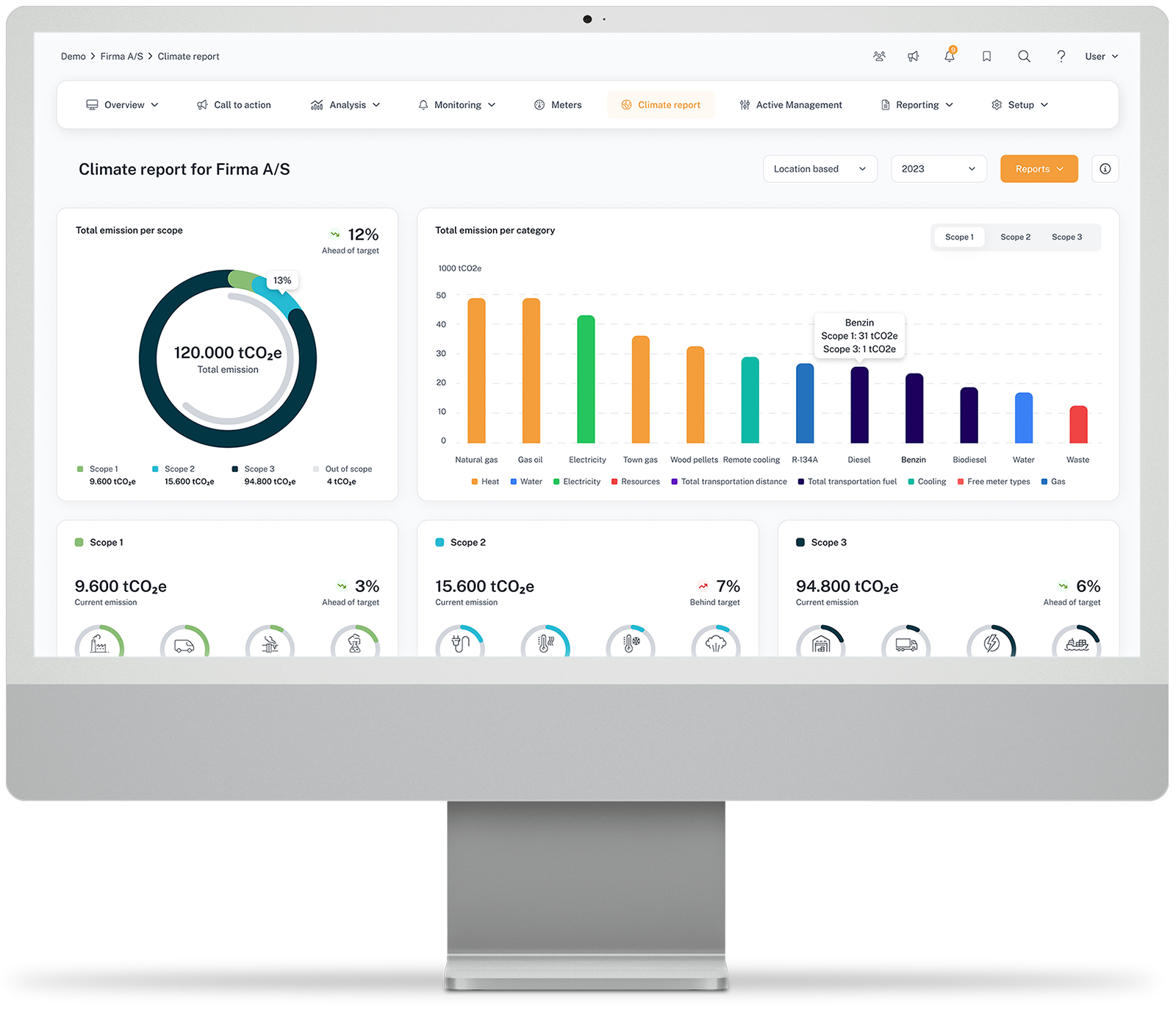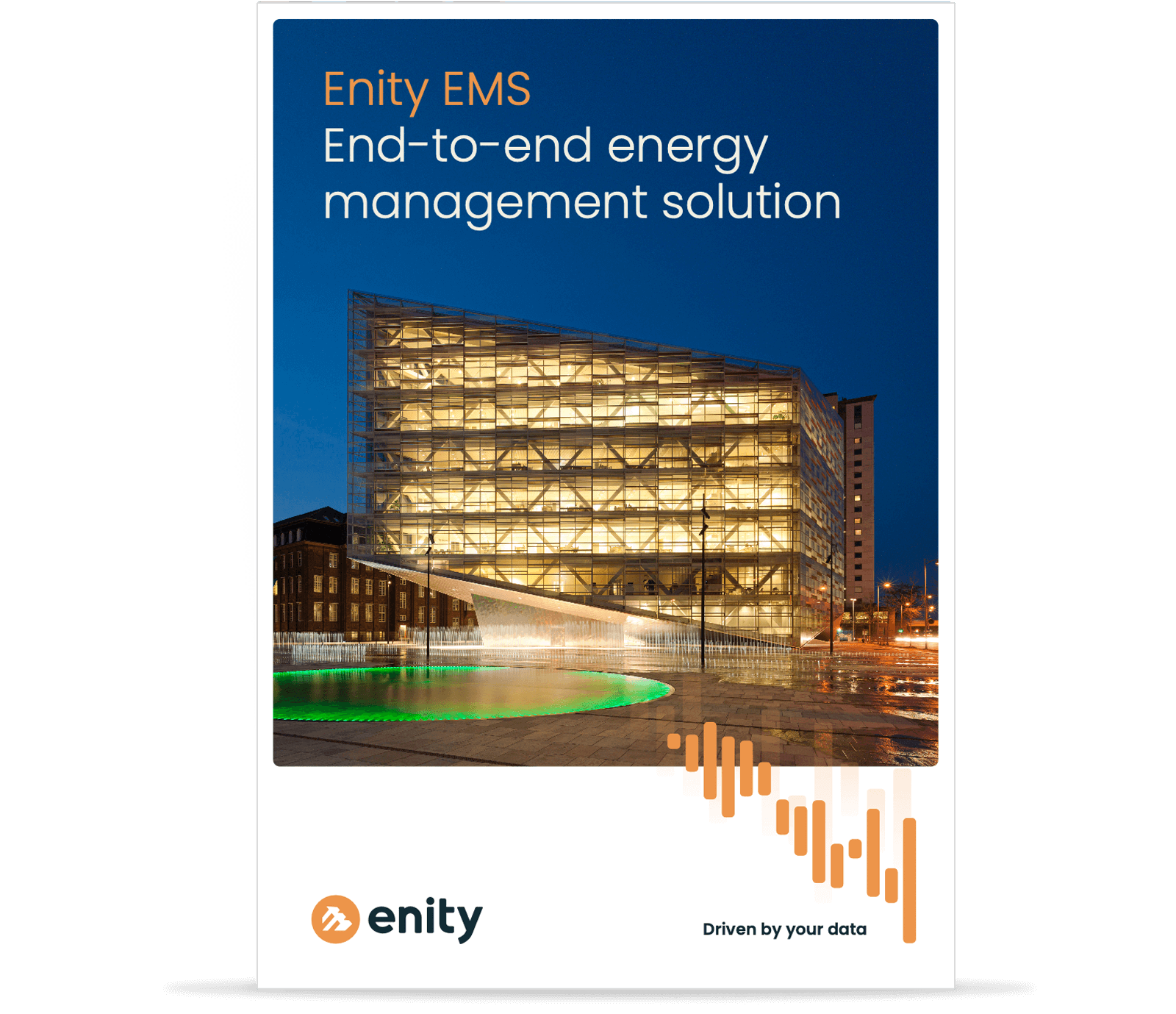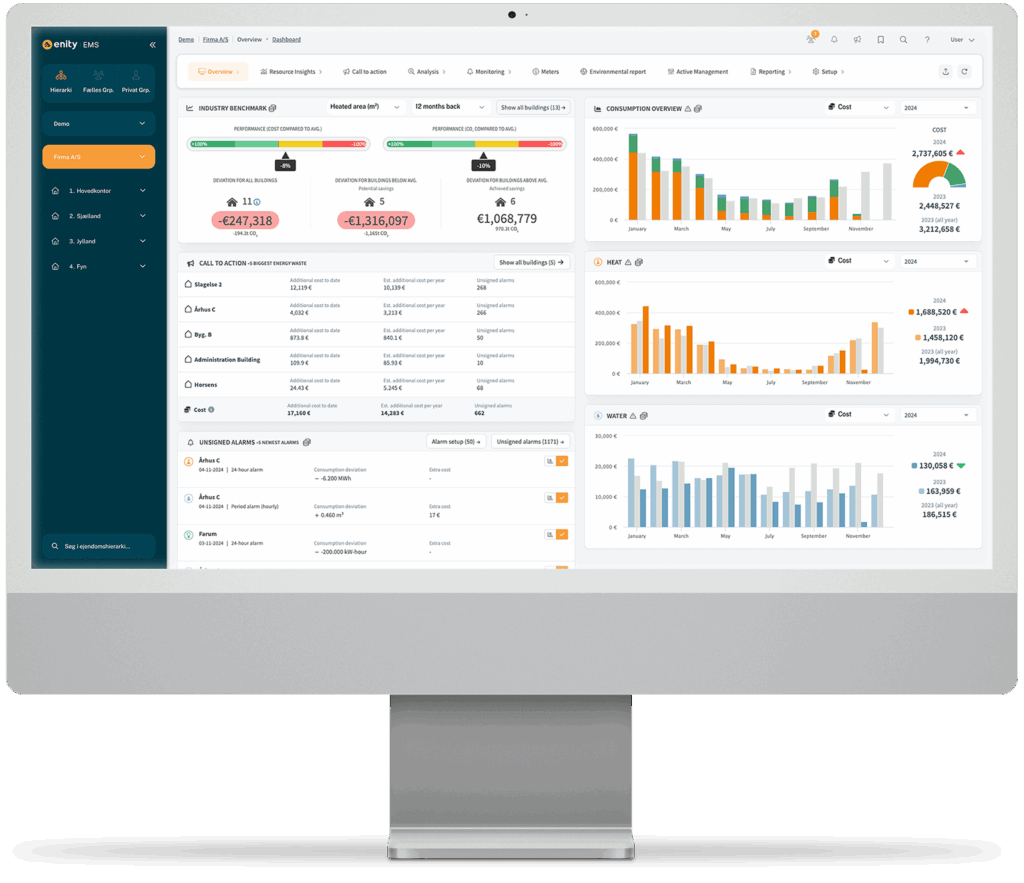
How facility management providers can prove energy savings and deliver ESG value
— and build trust through data.
From fragmented systems to one source of truth for energy performance.
For FM providers, energy performance and ESG documentation are now core responsibilities—not side tasks. Ironically, even in so-called smart buildings, facility teams often lack a single version of the truth. Smart meters, IoT sensors, BMS, and submeters all generate data — but rarely in the same format or platform. Instead of clarity, the result is often a tangle of disconnected dashboards that makes it harder, not easier, to manage energy performance.
Today, building owners, tenants, and investors are often required to deliver documentation of measurable energy efficiency and transparent, audit-ready ESG reporting. In the EU, buildings account for around 40% of energy use and ~36% of energy-related greenhouse gas emissions (European Commission – Focus: Energy efficiency in buildings). Policy pressure is intensifying through the revised Energy Efficiency Directive and the recast Energy Performance of Buildings Directive (European Commission EED overview; EPBD summary on EUR-Lex).
The pain: fragmented systems, siloed data, and reactive operations
Many FM teams still operate with disconnected technical systems (HVAC, lighting, submeters, BMS/CTS) and data scattered across Excel sheets and PDFs. This fragmentation slows analysis, increases the risk of reporting errors, and keeps operations reactive rather than proactive. When owners or regulators request proof of savings or compliance, FM teams are facing enormous because the required evidence isn’t consolidated.
The most common blockers include:
- Fragmented building systems that don’t communicate, creating blind spots.
- Data silos (Excel/PDFs) that make portfolio-level insights slow and error-prone.
- Lack of real-time visibility, leading to reactive fixes and higher OPEX.
- Manual ESG/ISO 50001 documentation that’s time-consuming and risky.
- Difficulty proving value against SLAs and green targets
The solution is ready at hand: an EMS that ensures energy efficiency, proves savings and simplifies compliance
An Energy Management System (EMS) addresses these pains by consolidating energy data into a single, open platform. Instead of chasing numbers across multiple systems, facility managers get a live view of consumption and performance, plus an audit trail for every metric. Deviation detection in buildings becomes part of daily operations, and portfolio energy benchmarking highlights where to intervene first.
What a modern EMS enables for FM?
- Real-time monitoring with deviation detection to prevent waste.
- Standardized KPI packs that owners, investors, and auditors can trust.
- ESG and ISO 50001 compliance support with automated evidence and versioned documents.
- Portfolio benchmarking to prioritize investments and scale best practices.
By acting as the backbone for smart building data, an EMS unifies inputs from meters, IoT sensors, and automation systems into one reliable source of truth. This integration ensures that every stakeholder — from FM teams to owners to auditors — works from the same numbers, reducing disputes and accelerating decisions.
The International Energy Agency underscores the value of this approach: efficiency improvements in buildings are among the fastest and most cost-effective ways to reduce emissions while creating economic value (IEA – Energy Efficiency 2023). With EMS for ISO 50001 compliance, FM teams move away from manual reporting cycles and into continuous performance management.
Partner with Enity
Join our network of partners and bring
smarter energy solutions to your customers.
From service supplier to strategic sustainability partner
With EMS as the operating layer, FM providers can demonstrate impact in ways that strengthen relationships and margins. Instead of debating effort and hours, the conversation shifts to outcomes: kWh avoided, €/m² reduced, and kgCO₂e abated. Owners gain confidence that SLAs are being met with hard evidence, and FM providers gain leverage for renewals, expansions, and consultative work.
In practice, this looks like monthly KPI narratives that explain what changed, why it changed, and what’s next—supported by data and clear M&V logic. Proactive reviews replace reactive firefighting, and portfolio playbooks emerge that standardize wins across sites.
Competitive advantage in a crowded FM market
Traditional FM services are easy to compare. Demonstrated energy performance is not. Providers that master energy data and documentation carve out a durable edge: they are harder to replace, they command trust, and they can expand scope based on results.
Three advantages stand out:
- Proof beats promise: Objective savings and compliance evidence de-risk renewals.
- Recurring value: Continuous monitoring/reporting embeds providers deeper in contracts.
- Bid strength: Data-backed case studies improve win rates where sustainability KPIs matter.
For facility managers, this shift means moving from a fragmented toolset to a single data backbone for all smart building systems. The ability to provide one trusted source of energy data not only simplifies operations but also strengthens FM’s role as the strategic interpreter of smart building performance.
This direction is reinforced by policy momentum (EPBD/EED) and market signals from PropTech adoption and investor ESG scrutiny (EPBD overview).

Book a demo
Prove performance. Simplify compliance.
See how EMS turns energy data into measurable results and strengthens FM partnerships.
FAQ: facility management, EMS, and compliance
How do FM companies prove energy savings?
Start by establishing a weather- and occupancy-normalized baseline. Use the EMS to track interventions, then publish monthly KPI packs showing variance versus targets. This creates an auditable trail that owners and auditors can verify.
How does an EMS help with ESG and ISO 50001?
An EMS automates data capture, consolidates evidence, and structures the Plan–Do–Check–Act cycle. It minimizes manual work and error risk while ensuring documents and datasets are versioned and audit-ready (ISO 50001 overview: https://www.iso.org/iso-50001-energy-management.html).
Is EMS relevant for smaller contracts or single buildings?
Yes. Deviation detection prevents waste even in single assets, and automated reporting reduces time spent assembling evidence—freeing teams to focus on improvements.
Resources for FM leaders
International Energy Agency:
Energy efficiency in buildings
European Commission:
Energy Efficiency Directive overview (EED)
EPBD:
Energy Performance of Buildings Directive summary (EUR-Lex)

Download brochure
Read more about energy efficiency with Enity EMS. To the benefit of both the budget and the climate.

Book a demo
We show you the possibilities and potentials for optimizing your energy consumption.
